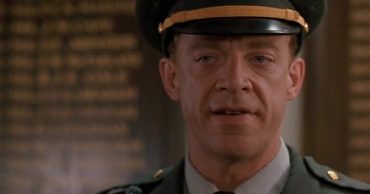
When you think about it, just blurting out how big a planet is tends to be very easy since comprehension isn’t really needed. So long as people have a pretty good grasp of the number they don’t really tend to think of how insanely big something really is, nor how much mass is involved and what type of force it takes to keep everything in balance. When comparing fictional planets though things tend to go beyond the sizes that human beings fully understand or comprehend and the conventional method of understanding a planet kind of goes out the window since the bigger a planet gets, the more mass it tends to have. At least that’s the thought since there are various planets in the mix such as Yavin Prime and Bespin from Star Wars that are classified as gas giants, which feature a solid core but are composed largely of gaseous materials that swirl and churn above and around the core of the planet. Many of the planets on this list are habitable, but thinking about how life might differ from one planet to another is bound to make a person’s head spin since comparing the largest desert on earth to the planet Arrakis wouldn’t even be fair since Arrakis is all desert as far as anyone knows. Even Tatooine outstrips any desert that the earth might boast since the entire planet is one giant wasteland with pockets of life here and there that fans know about thanks to the many stories.
There are many worlds that were modeled more or less from earth since they possess many of the same qualities, though there are also plenty of worlds that offer up different challenges such as atmospheres that aren’t conducive to human life, or harsh and unforgiving climates that are far worse than anything that humans have ever had to endure. The great thing about fictional worlds is that once a person adheres to a few things that are common sense and can help create a better story, the world is open to doing with what the person will, since no matter what anyone thinks the only impediment to reality when it comes to fiction is a person’s imagination and how far it can stretch. There are plenty of worlds out there in pop culture that a lot of people can’t fathom since the attention to detail and the qualities of each world are so alien to the human way of thinking that trying to sort them all out is insanely tough. In terms of size, trying to imagine how long the days and nights are would be difficult if not impossible for some folks, while others would see it as a worthy challenge to come up with.
On top of this, the many properties that a world could hold would be fun to think about since it’s all a matter of what the creator needs or wants to happen and how it can be made to coincide with other factors and with the inhabitants of the world. There are some natural laws to establish and pin down at times since otherwise any story that takes place in the fictional world might make little to no sense, and there kind of has to be a balance in order to make things work for the intended audience. Smaller worlds are bound to carry less difficulty to establish, while the bigger a world gets the more likely it’s going to need different zones that will need more development and their own individual climates and formations that are the result of different shifts in the planet’s surface due to one set of natural forces or another. This is the human scope at work since this is how we tend to think of things like this, in concrete terms that can be altered due to imagination, but still have to cling to a fairly standard set of ideals from time to time that helps us to identify familiar concepts and features that don’t challenge what we know to such a degree that they can’t be understood at all. The humanoid form that we see in so many different shows, games, and movies is a good example of this since it argues that the humanoid form is a kind of default no matter how many different variations there are to it.
Of course, there are some worlds where the dominant life forms are not humanoid, and this is a great challenge for a lot of individuals since it suggests that the humanoid form is not the only dominant shape within the universe, no matter that in reality, it’s all we know. The formation, size, and scope of fictional worlds is something that takes a while to really absorb and appreciate in its entirety, but once a person gets the hang of it and gains a better understanding, it can be a lot of fun to create a world.
 Follow Us
Follow Us




